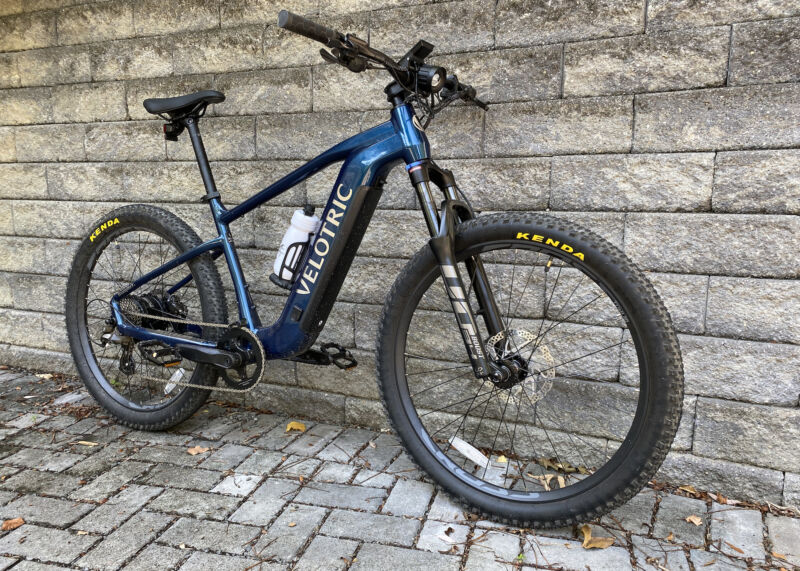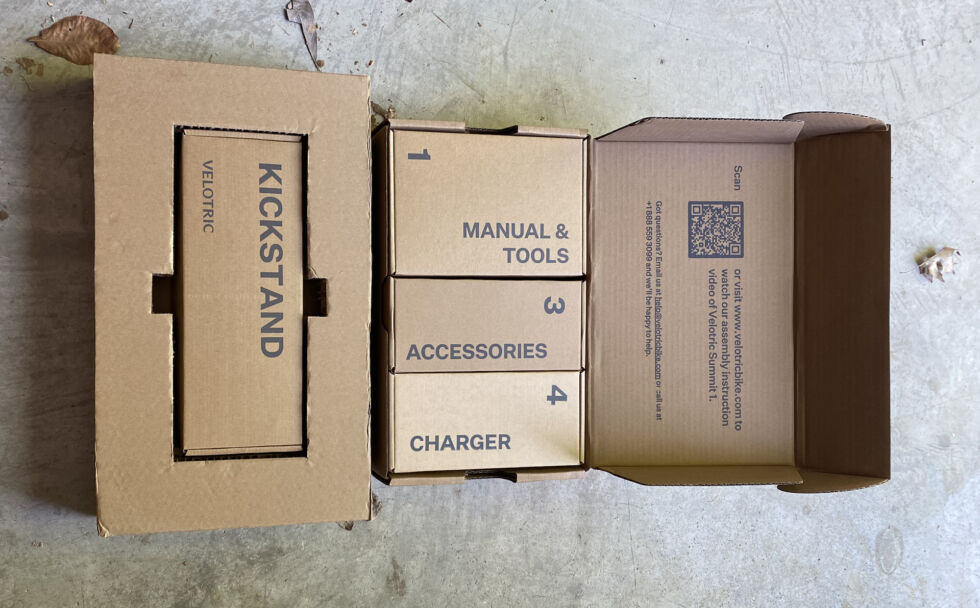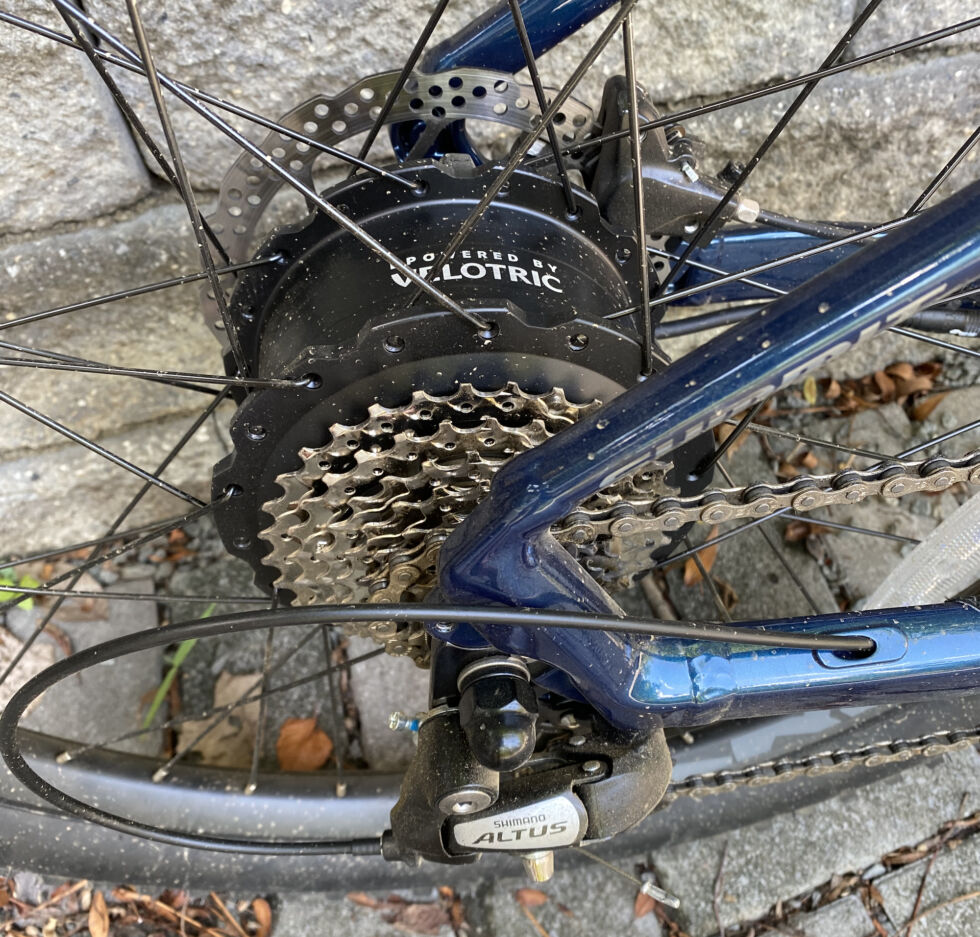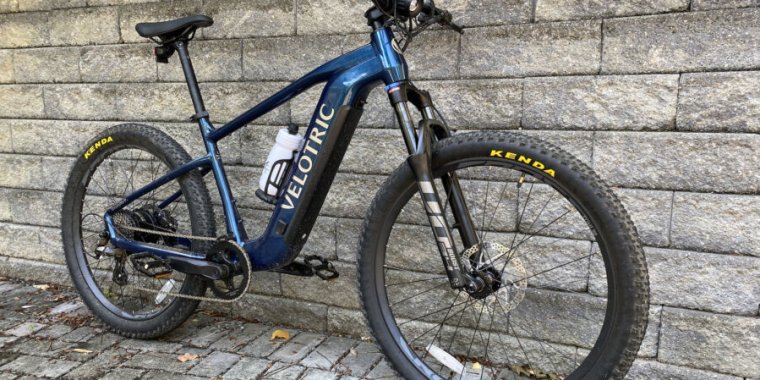
John Timmer
As I mentioned in another recent review , I’ve been looking at electric hardtail mountain bikes lately. Their relative simplicity compared to full-suspension models allows companies to push the price point down without sacrificing much in the way of component quality, potentially making mountain biking accessible to people who might not otherwise consider it. The first e-hardtail I looked at, the Aventon Ramblas, fits that description perfectly, offering a solid trail riding experience at a price that rivals similar offerings from major manufacturers.
Velotric’s Summit 1 takes a slightly different approach to the equation. The company has made a few compromises that allow it to drop the price to just under $2,000, which is considerably lower than much of the competition. The result is something that’s a bit of a step down on more challenging trails. But it can still handle about 90 percent of what most alternatives offer, and it’s probably a better all-around bike for those who plan on using it for commuting or running errands as well.
Reach the top
Velotric is another company that sells nothing but e-bikes, and we’ve generally been impressed with their products, which offer decent value for the price. The Summit 1 appears to be a reworking of their T-series bikes (which also impressed us) in mountain bike form. You get a similar app experience and integration of the bike into Apple’s Find My system, though the company has ditched the fingerprint reader, which was supposed to act as a security measure. Velotric has also done a good job of tweaking the packaging to streamline the assembly process, placing various components in labeled sub-boxes.

John Timmer
However, these did not help me to avoid all the problems during the installation. In the end, I had to take the headlight apart and remove the handlebar clamp to attach the light to the bike, all contrary to the instructions. And connecting the color-coded electrical wires was more difficult than it should have been, because two of the wires were the same color. But it only started in one of the possible combinations, so it was not difficult to figure it out.
The Summit 1’s frame looks remarkably similar to the Ramblas; if there wasn’t a branding on it, you might have to look at the components to figure out which one you’re looking at. Like the Ramblas, it has a removable battery with a splash guard, but it probably won’t stay waterproof at major fords. There’s also no XL size option, and as usual, the Large was a tad too small for my legs.
The biggest visible difference is at the cranks, where the Summit’s motor isn’t located. Instead, it’s on the rear hub, which typically means a slight drop in performance, albeit often significantly cheaper. With the Summit, the drop seemed very small. I could definitely feel it in some contexts, but I’m pretty unusual in terms of the number of different hub and mid-motor configurations I’ve experienced (which is my way of saying that most people would never notice).

John Timmer
There are a few additional price/performance compromises to be found. The biggest is the rear drivetrain, which has a relatively paltry eight gears and lacks the very large cog rings typically found on mountain bikes without front derailleurs, which is what nearly all of them have these days. This isn’t as big a deal as it might seem, since the bike is built around a power assist that will easily tackle the hills those big cog rings were intended for. But it’s an indication of the ways in which Velotric has kept costs down. Those gears are paired with a Shimano Altus rear derailleur, which is controlled by a standard dual-trigger shifter and a plastic gear indicator to keep track of what gear you’re in.
The bike also lacks a dropper seatpost, which you can move out of the way during bouncy descents. Since the frame was already small for me, I didn’t really notice the lack. The Summit does come with a custom mountain bike fork from a Chinese manufacturer called YDH, which features an easily accessible dial that lets you adjust the amount of damping you get while riding. A nice touch is a setting that locks out the forks if you’re going to be riding on smooth asphalt for a while. I’m not sure who makes the rims, because I couldn’t read the graphics on them, but the tires were clearly labeled Kenda, a brand that appears on a number of other mountain bikes.
Overall, it wasn’t too hard to find the places where Velotric made compromises to bring the bike under $2,000. What was striking was how few there were. The obvious question is whether you’d notice them in real-world use. We’ll get to that after we discuss the bike’s electronics.

